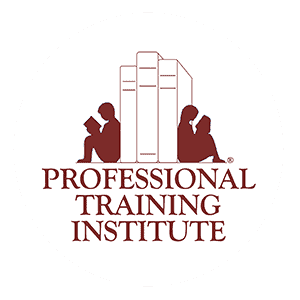
Fall is the season when many students are taking aptitude tests for entrance to a private Catholic high school or a four year college. The SATs are used for college entrance, but private high schools may use tests like the COOP (Cooperative Admissions Examination), and HSPT (Scholastic Testing Service High School Placement Test). The material covered usually falls into verbal skills (vocabulary, reading, comprehension) and mathematics.
The acronyms and content are not as important as the fact that these tests are stressful by the very nature of their design. That is to say, these tests challenge students’ abilities well above and beyond the actual content in the questions because they require students to demonstrate a plethora of skills simultaneously.
Students must engage several executive functioning skills, such as time management, paying attention, organization, and decision making. Many times, a student’s score depends on his/her ability to outsmart the test. Preparation is crucial, but the right kind of preparation is key to success.
General Test Prep Tips
- If your test isn’t computerized, make sure the bubbles you are filling in on your answer sheet match up with the subtest you’re working on in the question booklet. This tip is common, but is worth repeating because the last thing you want to do is to make a simple error that could cost you the test. I take this a step further when preparing students by telling them to double-check their accuracy with a quick meta-cognition activity, which is repeating the following intention in their head: “The answer to number 1 is b, I’m bubbling in b for number 1.” This takes an extra second, but is well worth it if it prevents trouble later on. It’s also a good idea to use a piece of scrap paper as a place marker on the answer sheet.
- Do not be dehydrated, hungry, or tired. Most settings allow you to bring a bottle of water and chew gum or suck on hard candy (sour gum or candy helps with concentration).
- Take some long deep breaths before and during the exam to calm the nervous system. When we are in stressful situations, breathing tends to become shallow and can interfere with our ability to think clearly and easily.
Critical Test Prep Tips to Avoid Pitfalls
Let’s face it – these tests are challenging. Questions have multiple layers of difficulty that prove tricky for everyone; never mind a person with any sort of reading and/or comprehension challenge.
I tell students to think of these tests like a complex game (chess for example). Once you understand the rules, you can win. However, if you aren’t aware of the test dynamics – you won’t have a fighting chance.
- Figure out the pattern of the questions. For example, consecutive questions may ask for very different things. If you aren’t ready for this, it will be more difficult to shift gears.
- Be careful of words that change the meaning of the question or the degree of accuracy like most nearly, not, sometimes, rarely, never, always… Sometimes two answers are plausible, but one makes the most sense.
- Be aware of tricks. Answers may sound similar to each other or to words in the question.
- Read every choice even if the first one answers the question.
- Pay very close attention to the subtest directions because they are specific to the task and will not only change from subtest to subtest, but may change from question to question as mentioned above.
- If you don’t know the meaning of the target word, look for a relationship between the other three choices and choose the answer that doesn’t belong because that will be closest to the meaning of the target word (see example Reading Part 1 below).
Let’s look at a few practice questions taken from the practice tests of the Kaplan Catholic High School Entrance Exams preparatory manual to illustrate these pitfalls. (1) An entire prep session could be taught based on the following excerpts.
Verbal Skills
Directions: Choose the best answer.
- Abundant is the opposite of (A) scarce (B) lush (C) collect (D) loyal
- Acquainted most nearly means (A) familiar (B) distant (C) friendly (D) unknown
- Which word does not belong with the others? (A) solemn (B) elated (C) serious (D) grave
- Small is to minute as large is to (A) toy (B) miniature (C) big (D) colossal
These questions illustrate tip #5. Within these four consecutive questions, they are looking for an antonym, a synonym, a word that doesn’t belong, and an analogy. Once you figure out the pattern of the questions, it generally repeats within the subtest.
Pay attention to the word opposite in question 1 to be sure to avoid choosing the meaning of abundant rather than its antonym which is choice (B) lush.
In question 2, pay attention to most nearly means because people that are acquainted or acquaintances are typically friendly, but choice (A) familiar conveys the meaning more accurately, therefore, most near to the meaning.
Question 3 has the word not. This adds a second layer of difficulty because the student has to determine what the words mean in order to determine which word does not belong and the vocabulary is difficult.
Question 4 is a perfect example of a question layered with hidden pitfalls. The first obstacle is the word minute. This word is both a homophone and a homograph. (It’s exactly the same as another in sound and spelling, but different in meaning depending on how it’s used). It can be read as the noun minute meaning 60 seconds or the adjective minute meaning extremely small.
When I read the question the first time, I thought the adjective small was being compared to the noun minute. This seemed to make sense because a minute is a small unit of time. So, I continued along this line of thought and began looking for an answer that would relate to the adjective large in the same way.
I got stumped because I couldn’t find a noun that related to large. Well, I started looking at big and colossal, but something was still not right. They were closer in meaning, but adjectives. I decided to re-read the question.
During this re-reading, it dawned on me that I initially misunderstood the relationship between the first two words. They are both adjectives, so minute as it’s used here means extremely small.
Question 4 also illustrates pitfall #3. Choice (B) miniature looks similar to minute and is related to the word small. On the first read through, a student may be tempted to choose miniature.
Reading Part 1
Directions: For each question, decide which choice has most nearly the same meaning as the underlined word or words given.
These directions contain the words to be aware of mentioned in pitfall #2. The directions say to choose the answer that most nearly means the target word. Right away, I tell students to be aware that several of the choices may be related to the prompt, but the trick is to pinpoint the choice that represents the meaning more than the others.
- To collate papers (A) correct (B) copy (C) arrange in order (D) staple
- To whet your appetite (A) stimulate (B) decrease (C) suppress (D) ignore
- To suddenly inundate (A) overwhelm (B) flood (C) submerge (D) all of the above
Take question #1 for example. The word collate makes you think of making copies, organizing, and stapling papers. However, the exact meaning of collate is to arrange in proper sequence so (C) arrange in order is the correct answer.
Let’s look at question #2. The first problem is the word whet. It’s a homograph, a word that sounds the same as another word, but is spelled differently and has a different meaning. Students are familiar with the meaning of the word wet (covered or soaked with water), but whet meaning to stimulate, as in appetite or curiosity, is uncommon in a typical 8th grader’s vocabulary.
It would seem that once a student determines s/he doesn’t know the meaning of the word that it is time to guess, but that is not necessarily true. There is still an opportunity to solve this puzzling question.
When you don’t know the meaning of the word, the next step is to try to see if you can find a relationship between three out of four of the remaining words. If you can, then the word that doesn’t relate to the other three will be the answer (pitfall #6).
So, in question #2, I would have students work backwards from the word ignore because that has a well-known meaning. They would then have to think about the connotation of the word ignore. In other words I would ask, “If you ignore something or someone does it make things go forward or not?” My goal here is to get them thinking in terms of decrease or less. When you ignore, communication or production decreases or stops. If I can get them to think of less, decrease, or stop, I may be able to get them to think about the meaning of suppress as relating to less or stopping. It is possible that they may have heard of a cough suppressant or a medicine used to stop a cough.
The endpoint of this is exercise is to establish that decrease, suppress, and ignore are related. Once this is established, then stimulate is the only word left; thereby the answer.
Now, I may or may not be able to help students make the connection in this particular case, however, it’s the method of preparation that is more important. Students need to be comfortable talking about the relationships between the words and searching for connections. These kinds of conversations with modeling and teacher feedback help students develop critical thinking skills.
The other benefit of teaching students to analyze the language of the question is that it builds confidence and gives them a sense of control. They are applying the strategies from a sense of meaning rather than superficially. Just like in a football game or dance, a person can learn the basics, but that doesn’t make him/her a player or dancer. Whereas, a person who develops a true understanding of the nuances can apply this and become a player or dancer.
Question #3 includes a very subtle pitfall. The first choice (A) overwhelm defines inundate perfectly. It is extremely tempting to choose the right answer and move on. However, they have very cleverly included two more answers that are also related and appropriate. What’s even more clever is that the last choice provides the option of choosing all three words making the answer (D) all of the above.
It truly is the attention to the small details of each and every question over and over again that leads to success. These tests are an exercise in tenacity. If students persistently apply these strategies to each and every part, they will achieve success.
It makes me think of Tom Brady, arguably one of the best quarterbacks to play the game. Each time he’s asked about his success, he typically talks about developing and refining his understanding of the game coupled with practice and skill repetition. He is successful because he knows the structure of the game so well that he can apply his skills seamlessly.
There is no question that these exams are difficult, stress provoking, and can seem indecipherable at times. In my opinion, it’s the right kind of preparation that makes the difference. If students are adequately prepared to understand and deal with the hidden pitfalls in these tests, they can begin to assimilate all that they have been taught and perform with ease and grace.
I think my 8th grade student explained it best. He said, “I feel like I’m going to get to the exam, open it up, and think, wow, this is easy, why did I prepare so much?.” I smiled and said, “The goal of all of this preparation is for the test to seem easy – if it seems easy, you can be sure you have prepared well.”
(1) Kaplan, Inc. 2007, Catholic High School Entrance Exams 2008 Edition. New York: Kaplan Publishing










Jaydin Skinner says: